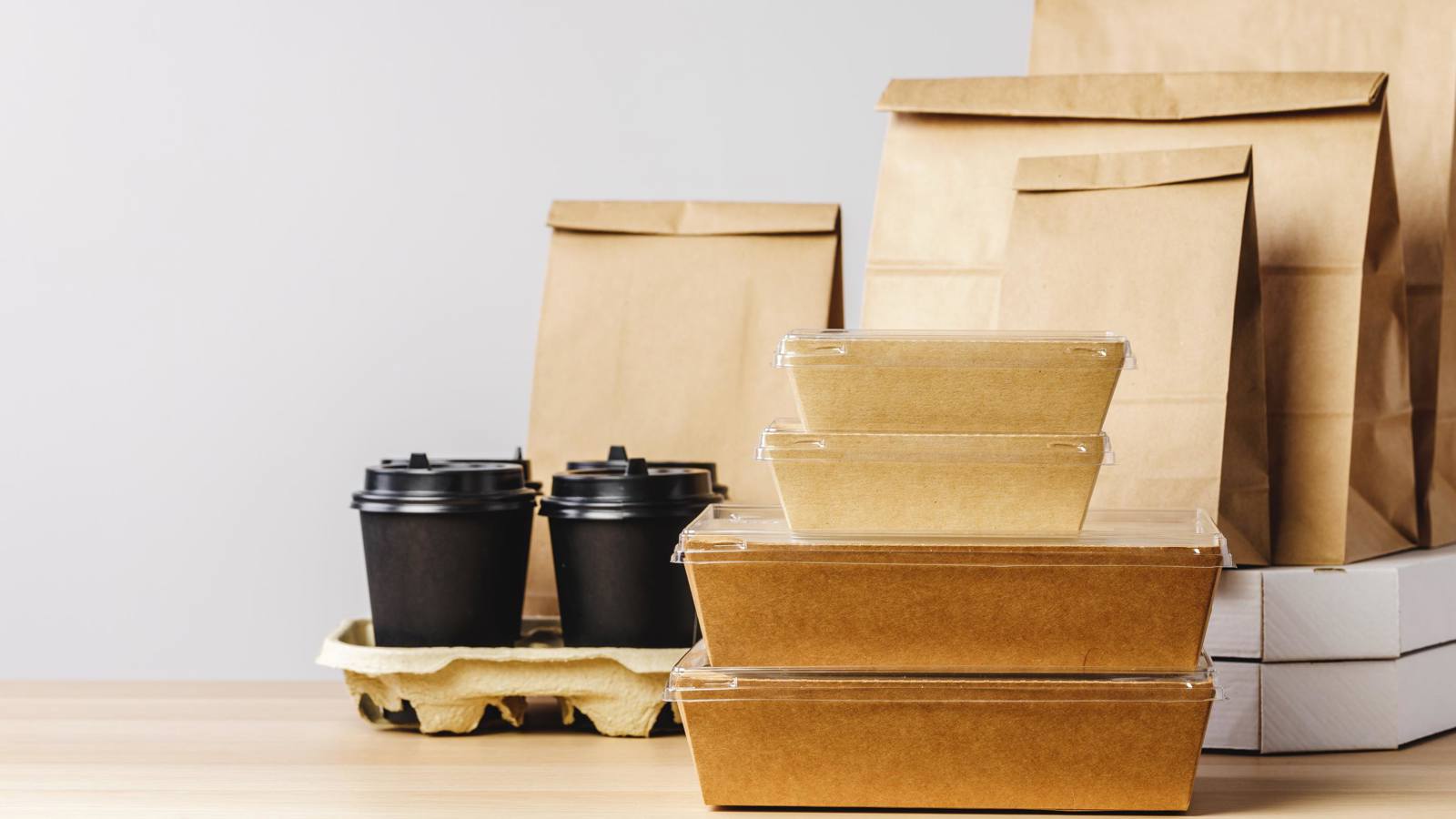
Food packaging: The application of texture analysis on the latest developments

The packaging industry is now moving quickly to develop biodegradable polymers for food packaging, reusable drinking straws as alternatives to single-use plastic, packs to contain anaerobic products and active cardboard boxes and more recently by using by-products of the food industry. These new packaging solutions however are expected to provide the same properties as traditional packaging materials and therefore, materials testing/texture analyser instruments are a vital tool in the strive for packaging perfection.
What are the new material and product ideas in food packaging research, development and production and how can a Texture Analyser be applied?
The food packaging industry continually evolves to meet consumer demands, improve sustainability, and incorporate new technologies. Here are some of the newer ingredient and product ideas in food packaging research, development, and production and a typical academic reference to show how the Texture Analyser has already being applied:
- Biodegradable and compostable plastics: Derived from renewable materials like cornstarch, sugarcane, or PLA (polylactic acid) and designed to decompose faster than traditional plastics.
Example: Development and comparative study of biodegradable packaging film from groundnut shell powder - Edible packaging: Made from ingredients like seaweed, rice, or potatoes. These can be consumed along with the packaged food, eliminating waste.
Example: Ultrasonics as a tool for development of pine-needle extract loaded bee wax edible packaging for value addition of Himalayan cheese - Active packaging: Includes elements that help extend the shelf life of the food, such as oxygen absorbers or antimicrobial agents.
Example: Commercial active packaging maintaining physicochemical qualities of carambola fruit during cold storage - Intelligent packaging: Features that change colour when the food is spoiled or when the cold chain is broken, ensuring product safety.
Example: Preparation of PVA/PLA-based intelligent packaging to indicate the quality of shiitake mushrooms - Nanotechnology in packaging: Using nanomaterials to improve the barrier properties, mechanical strength, or even add antimicrobial properties to packaging materials.
Example: Zinc oxide enhanced the antibacterial efficacy of biodegradable PBAT/PBS nanocomposite films: Morphology and food packaging properties - Water-soluble packaging: Packaging that dissolves in water, leaving no waste behind.
Example: Potato Starch-Based Film Incorporated with Tea Polyphenols and Its Application in Fruit Packaging - Upcycled packaging: Using waste materials or by-products from other industries to create new packaging.
Example: Potato chips byproducts as feedstocks for developing active starch-based films with potential for cheese packaging - Reduction of packaging materials: Simplifying packaging to use fewer materials overall, reducing the environmental footprint.
Example: Combining experiments and mechanistic modeling to compare ventilated packaging types for strawberries from farm to retailer - Recyclable or returnable packaging: Encouraging consumers to recycle or return packaging for reuse.
Example: Influence of different bio‐based and conventional packaging trays on the quality loss of fresh cherry tomatoes during distribution and storage - 3D printing in packaging: Creating customized packaging designs, particularly for prototype development or niche products.
Example: 3D extrusion printability of sugarcane bagasse blended with banana peel for prospective food packaging application
The future of food packaging is likely to see more innovations that merge technology with sustainability, catering to a global audience increasingly concerned about environmental impact, health, and convenience.
Using a Texture Analyser in food packaging development
The incorporation of the Texture Analyser in food packaging product research and development (R&D) presents a comprehensive strategy to enhance packaging design and performance. Tensile strength measurements quantify the resilience of packaging films or materials against pulling forces, a fundamental attribute impacting package durability. Seal integrity evaluations ensure the reliability of sealed areas, preventing ruptures during transportation or storage. Peel strength analysis caters to packages with peelable lids, ensuring consistent and appropriately forceful lid removal, exemplified by yogurt containers.
Puncture resistance assessments gauge packaging material resistance to punctures, an essential aspect ensuring the ability to withstand potential stresses. For flexible packages, flexibility and bending characteristics are examined, offering insights into resistance against creasing and bending. Compression testing safeguards against package crushing underweight, a key consideration for product protection. Understanding the friction behaviour of packaging, particularly for automated packaging processes, is addressed. Tear resistance measurements quantify the force necessary to tear packaging materials, determining easy openability where required and maintaining resistance in other cases. Adhesive strength assessment is pivotal for labels or glued areas, ensuring strong bonding. For squeeze bottles or tubes, the Texture Analyser assesses squeeze force, determining the force necessary for contents dispensing.
Collaborating with other testing methodologies, the Texture Analyser offers a comprehensive understanding of packaging performance. The insights derived from these evaluations guide packaging refinement, ensuring products meet the desired performance criteria for protection, ease of use, and transportation durability. In the realm of food packaging R&D, the Texture Analyser emerges as an indispensable tool, fostering meticulous analysis and enhancing packaging solutions aligned with industry standards and consumer needs. Texture analysis in the context of food packaging helps manufacturers develop packaging that not only keeps food fresh and safe but also meets consumer expectations for usability and sustainability. Properly evaluating these tactile and mechanical properties can influence package performance, product preservation, and user experience.









